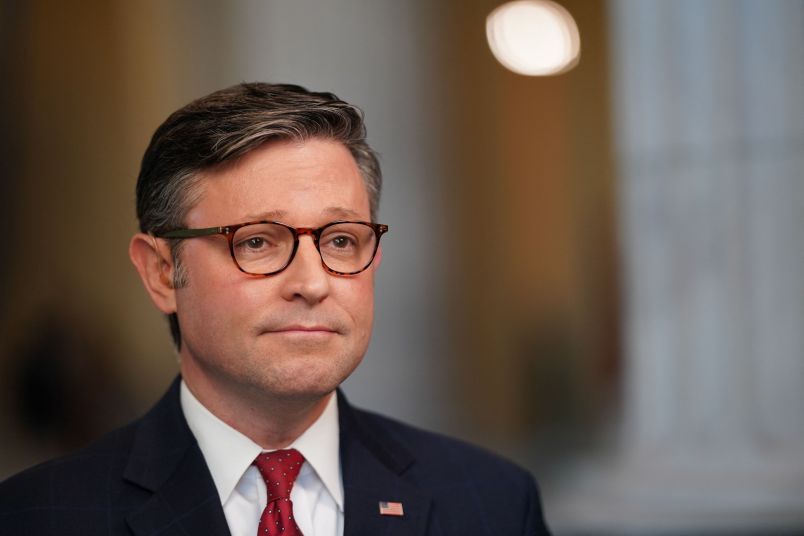The Italian Connection, Part II
In the previous installment I described early reporting I did on the origins of the Niger forgeries â reporting which pointed strongly toward an Italian government role in the Niger uranium hoax.
I started reporting on the story in earnest in January 2004, when I still had a writing contract with The Washington Monthly, where I then did most of my long-form magazine reporting. So after the preliminary reporting I described earlier, I told the magazineâs editor, my friend Paul Glastris, that I would write my next piece on the Niger story. I also asked Laura Rozen to join me in reporting the story.
Soon, however, it became clear to me that we simply wouldnât have the clout or the resources to break open the story, either in Washington or in Italy. We were also crossing paths with various unpleasant characters as we tried to piece together clues about the identity of the man who had sold the documents — which, honestly, isn’t fun without a large news organization in the mix.
So I approached a producer at 60 Minutes who had earlier expressed an interest in working together on a project. We came up with an arrangement in which we would share sources. They would have access to the sources and leads I developed and I to theirs. Theyâd produce their television segment. Iâd write my article. Both would be separate. Our only agreement was that we wouldnât scoop each other. I wouldnât write my article until their TV segment aired.
Before approaching CBS weâd already come up with the name of a man we thought might be the one who had first peddled the documents to Elisabetta Burba, the Panorama journalist whoâd first gotten hold of the forgeries in October 2002. The next step was to go Burba herself and see if we were right. Only she could provide the confirmation. Only she knew who it was we were looking for.
That was in the first week of April 2004.
We talked to Burba. And we asked. And, quite simply, we were wrong. Dead wrong. It wasnât him. A huge amount of legwork was simply a bust. I’ve never been sure whether the original lead about the identity of the documents peddler was just a bum steer or a fragment of the real story which we had somehow misinterpreted. Regardless, for us it was a dead end.
But things didnât end there.
Burba proceeded to do what sheâd never done before. She told us about the unnamed security consultant, without revealing his name. And she went on to describe what had happened in the year and a half since the forged documents had first come into her possession.
Ever since Panorama had established the documents were unreliable, Burba had wanted to pursue the story behind the forgeries. But her editors at Panorama decided not to publish anything.
Nevertheless, she confronted her source and demanded to know where he had gotten the documents.
In response to her demands, he began to describe a murky story involving an Italian intelligence officer and a woman working at the Embassy of Niger in Rome.
Later we learned the name of her source: Rocco Martino. Martino was an information peddler, a former member of Italian military intelligence (SISMI) who, after retiring from SISMI in the early 1980s, had worked as a supplier of information and sometimes agent-for-hire for other intelligence agencies in Europe and the Middle East. His specialty, he would later tell us, was work on Islamic fundamentalist groups around the southern Mediterranean. He recounted trips over the years to countries across the Arab Middle East and North Africa.
The story began, as Martino later told us, when a former SISMI colleague had approached him with a proposition. The manâs name was Antonio Nucera, a SISMI colonel. The two had remained in professional contact over the years since Martino had left the service.
Nucera pointed Martinoâs attention to a female Italian national who worked as a secretary at the Nigerien Embassy in Rome. The woman had been a long-time source for SISMI, a SISMI asset, apparently stealing documents from the Nigeriens and possibly from others and then passing them on to SISMI. Martino would later tell us that she had once worked at the embassy of another African nation in Rome — apparently then too as a plant for Italian intelligence.
Nucera told Martino, somewhat contemptuously, that SISMI was washing its hands of the woman. But he suggested that she could provide Martino with documents and information that he could make use of, selling to his various clients, often to the highest bidder. It was from this woman working at the Niger Embassy that he had gotten the dossier of Niger uranium documents he later tried to sell her in October 2002. Later, he would come to believe that Nucera had himself provided the dossier to the woman at the Niger Embassy .
And there it was, a first account of what had happened from two of the players at the center of the drama, at least a rough outline — from Nucera, the SISMI colonel, to the woman at the Niger Embassy to Martino.
Next we would have to try to talk to these three players themselves.
(ed.note: The text above is a revised version of the post that appeared late Tuesday evening — jmm.)






